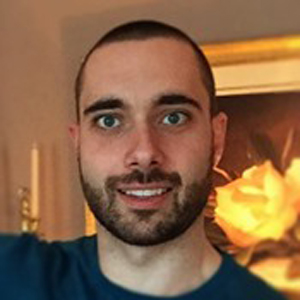Program Information
Patient-Specific Monte Carlo Simulation of Lung Brachytherapy: Metallic Artifact Reduction and Organ-Constrained Tissue Assignment
JGH Sutherland1*, N Miksys1, KM Furutani2, RM Thomson1, (1) Carleton University, Ottawa, ON, (2) Mayo Clinic, Rochester, MN
WE-C-108-11 Wednesday 10:30AM - 12:30PM Room: 108Purpose: To investigate techniques for developing accurate patient-specific computational phantoms for Monte Carlo simulations of lung brachytherapy. Methods to mitigate streaking artifacts due to brachytherapy sources in CT images and organ-constrained tissue assignment schemes are explored.
Methods: Three different metallic artifact reduction (MAR) techniques are applied to lung brachytherapy patient CT data: thresholding replaces high CT values with estimated true values; fan-beam virtual sinogram replaces artifact-affected values in a virtual sinogram; and 3D median filter uses local voxel values to guide the replacement of outlying voxel values. Computational phantoms are generated from metallic artifact corrected and uncorrected images with voxel composition defined by CT number and density defined either by nominal tissue density or a CT number to density calibration. Multiple tissue assignment schemes are considered, including some with organ-specific constraints. Dose distributions for I-125 and Cs-131 seeds are calculated using the EGSnrc user-code BrachyDose and are compared directly as well as through DVHs and dose metrics for target volumes surrounding surgical sutures.
Results: The most effective MAR technique is the virtual sinogram method as it effectively mitigates artifacts while maintaining image integrity. Thresholding only removes artifacts in the vicinity of sources (leaving artifacts in other regions) and median filtering degrades tissue heterogeneities. Dose distributions for phantoms treated with various MAR techniques and tissue assignment schemes can vary significantly. Dose differences between MAR and uncorrected phantoms are reduced by constraining tissue assignments in lung contours; in one example, differences in D90 of 20% are reduced to 3%. Phantoms with nominal densities result in higher doses than those with CT derived densities.
Conclusion: Application of MAR techniques to CT data is necessary to develop realistic computational phantoms for Monte Carlo simulations; the virtual sinogram method is a promising image-based technique. Organ-constrained tissue assignment is necessary for accurate tissue assignment.
Funding Support, Disclosures, and Conflict of Interest: This work was supported by the Natural Sciences and Engineering Research Council, the Canada Research Chairs program, and an Ontario Graduate Scholarship.
Contact Email:


